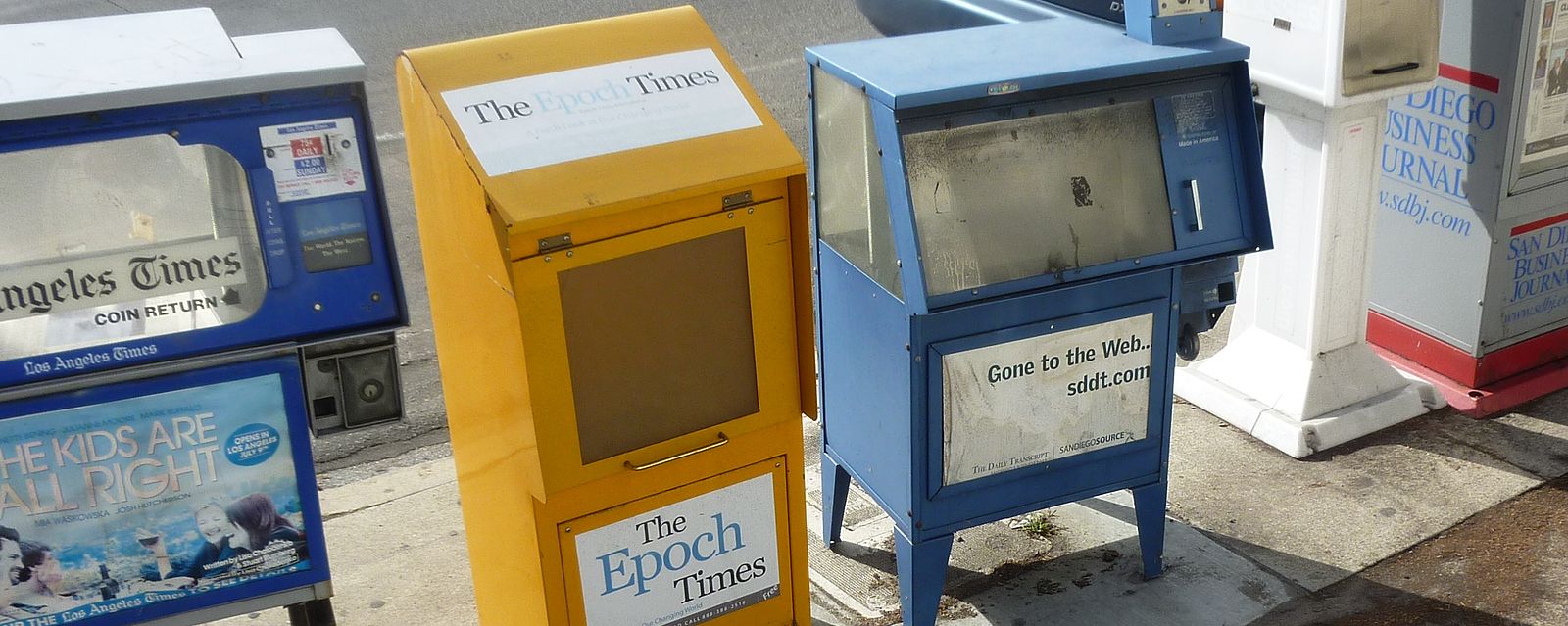
Journalism is a business.
It is about making money.
Here’s a good rule of thumb: If there is no revenue, there is no journalism.
The money comes first, the journalism follows.
It used to be that owning a newspaper or being in the news business was pretty much a machine to print money (along with the papers). Sulzberger family who owned The New York Times; the Bancrofts, who owned The Wall Street Journal; The Gannetts... to to mention The Paleys, the Sarnoffs and so on... were the blue bloods of American wealth.... and power.
That is all gone... or fast going.
They made money in news.
Today, the news business is evaporating faster than a glacier in an Al Gore documentary. Earlier this week, The New York Times, (still in business so far) reported that digital revenues were dropping and online news organizations (along with their former print cousins) were shedding staff fast. Digital income was not, it seemed, going to be the panacea that saved the news business.
Well, journalism is a business, and this business is in deep trouble.
The idea that journalism should make money strikes most journalists as anathema. They feel they should not get their hands dirty with ‘money’; that money is somehow, (and they’re not too sure exactly how) evil. A lot of this has to do with a deeply held suspicious, articulated best by Finley Peter Dunne, who as far back as the 1880s said that the job of the journalist was “to comfort the afflicted and afflict the comfortable.”
This notion of journalism as a kind of ‘holy mission’ really took hold after the release of the film All The President’s Men (and the Watergate crisis in general). Here, two highly dedicated, selfless junior reporters for The Washington Post brought down the evil Nixon. What a story!
I was a member of the Class of 1983 at Columbia Journalism School, and many if not most of my classmates were inspired by the film. Journalism was our ‘calling’.
The fact that Joseph Pulitzer, father of ‘yellow journalism’, scandal and sensationalism founded our school (pretty much to feed his rag tag newspapers’ voracious need for content) was somehow overlooked.
He also made his fortune out of newspapers, and the Prize, awarded just last week, bears mute testimony to the amount of money you used to be able to make with printed papers. No more.
The model is gone. But what was the model? Let us be honest here. The purpose of the ‘articles’ as to fill in the spaces between the advertising that provided the revenue. THAT was the business. The articles are still there, it’s just the ads that have gone away - in print or on line.
So... what can we do?
Well, the natural response of the MBAs is to fire people. But that won’t keep the ship afloat forever.
I have another idea. And I think this could work.
My favorite line from All The President’s Men is: “follow the money”.
And where is the money?
It isn’t in newspapers and it apparently isn’t in online ads either.
So where is the money?
At the moment.... but who knows for how long? But at the moment it is in television. Cable television, to be specific. 600+ channels in the US and more than 50,000 channels around the world, all of which need content, and lots of it, 24 hours a day, 7 days a week, 52 weeks a year. That is a LOT of television.
And what kind of television do you see on cable?
Food. Fashion. Sports. Travel. Real Estate. Arts. Style. oh yeah... and news.
Now, as it happens, that is also the list of sections for The New York Times (and lots of other papers).
Newspapers, as it turns out, are about a lot more than ‘news’.
And, as it also turns out, newspapers have increasingly (albeit a bit late) begun to work in video.
Now, television, as it turns out, is also made out of video.
And there is no reason in the world, except for a psychological one, that newspapers could not become very (very) profitable producers of television content for cable, both in the US and world wide.
They could.
Newspapers are more than ‘news’ and more than ‘paper’. They are centers for content creation. And, in the digital world, there is not a lot of difference between creating in text and creating in video. And many papers area already making a lot of video. They’re just burying it behind their paywalls - which is crazy. Crazy.
Look at it this way.
An average US cable network pays about (more or less) $250,000 per half hour for a reasonable TV cable show. And they tend to buy them in blocks of 13. So, one ‘food’ show could generate $3.25m in gross revenue for a newspaper.
Now, the NY Times charges $3.75 a week for its digital subscription. That’s $195 a year. That’s the equivalent of (more or less) 870,000 weekly subscriptions. And that’s just for one show, for one network. There are thousands of them. Tens of thousands if you think about the global market for video content.
How many food shows could the NY Times with their vast content resources generate? How many travel shows? How many sports shows (OK, not their strongest point). Real Estate? Business? Fashion?
You get the idea.
And I am not picking the Times here. Almost any major ‘journalism’ company in the country could pull off the same trick. But they don’t. The don’t because they don’t see themselves in the ‘television’ business.
This is a big mistake.
And what about the ‘journalism’?
Well, if you generate enough money from your TV business (just ask Rupert Murdoch), you have plenty of cash to throw into your ‘news’ business without having to fire a single journalist.


